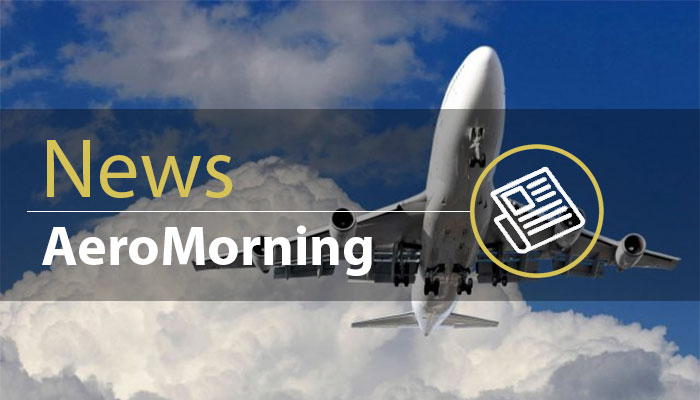18th January, 2023: Increased passenger demand is predicted for 2023 despite a challenging economic environment, according to data revealed by IBA, the leading aviation market intelligence and consultancy company.
In its 2023 Market Update webinar, IBA’s ISTAT-certified experts explained that desynchronised global slowdown is already underway, with key measures such as stock market performance, production, yields, consumer confidence and business confidence all down.
Economic outlook
High inflation and debt remain the biggest concern for 2023 and while central bank base rate changes are now starting to affect inflation levels, IBA believes that a mild recession remains the likely outcome. With high consumer and business debt set to impact employment and consumer spending throughout the year, IBA believes it is paramount to maintain supply chains in the face of slowing growth otherwise further inflation is inevitable.
Looking at oil price factors, crack spreads are forecast to reduce slowly over the next two years. Crude price forecasts are split due to a variety of factors including the economic slowdown in Western markets, the Chinese market recovery and actions by OPEC (Organization of the Petroleum Exporting Countries), resulting in a consensus of US$95-105. Refinery throughput is expected to increase by around 3.5% across 2023-2024 which will help reduce crack spread back towards $25-30.
IBA believes that this challenging environment is likely to undermine narrowing currency exchange rates, which drove non-US airline US$ borrowing and operational costs up by between 10-30% in 2022.
Supply chains will strain to satisfy demand in the year ahead with production rates forecast by IBA to rise, and Airbus maintaining its market lead, but backlog levels are expected to remain flat. Overall, IBA forecasts that aircraft orders will reach 1,950 in 2023 compared to 2,123 in 2022, but deliveries will move above 1,500 aircraft in 2023, compared to 1,294 in 2022.
Volumes, capacity and profitability
For 2023, global passenger volume is forecast to grow by 22% year-on-year. IBA believes that passenger demand has historically been resilient to GDP weakness, with 2023 expected to see 4.2 billion passengers compared to 2019 levels of 4.5 billion. IBA explains that demand remains strong and there remains pent-up demand from the pandemic.
Whereas in 2022 the recovery was mainly driven by short-haul and leisure, 2023 will see a strong rise in long-haul capacity and also see business travel recover to pre-pandemic levels. The key transatlantic route will see a material 17% increase in capacity in the second quarter versus the same period last year.
In line with this, airline profits will rise modestly in 2023 due to lower unit costs being partly offset by lower unit revenue given the additional industry capacity. IBA concurs with IATA’s forecast that the industry will achieve a profit barely above break-even in 2023. According to IATA, regionally, North American airlines will be the most profitable with predicted EBIT margins of 3.3%, with European airlines at 0.6%, and while Asia Pacific airlines continue to lag behind with predicted average negative margins of -4.7%.
Weak airline balance sheets could accelerate industry consolidation in 2023 as government support comes to an end, according to IBA. North America is the most consolidated with 69% of its capacity within the 10 largest airline groups, compared to Asia Pacific which is the most fragmented at 35%, while Europe sits in the middle at 49%. IBA believes that smaller network airlines with high unit costs and a short-haul focus are most at risk from consolidation.
Aircraft values and lease rates
The final section of the webinar looked at aircraft values and lease rates. IBA stated that new aircraft Market Values are set to recover to pre-pandemic levels while mid-life widebodies have faced Base Value adjustments. For instance, a 12-year-old 777-300ER had a Base Value of US$70.24m in 2019, and this had dropped to US$33.04m in 2023. Conversely, a new A350-900 had a Base Value of US$155m in 2019 which has increased slightly US$156.95m in 2023.
IBA forecasts that lease rates for new narrowbody aircraft are set to rise above pre-pandemic levels in 2023, driven by tight aircraft supply, rising demand and interest rates. New narrowbody lease rates are forecast to rise above pre-pandemic levels in the second half of 2023. The A220-300’s market monthly lease rates were US$256,000 in October 2019 and are predicted to rise to US$278,000 this year.
Previous generation narrowbody lease rates are also expected to grow through the second quarter of 2023, but not to pre-pandemic levels. A ten-year-old Boeing 737-800 was at US$227,000 per month in October 2019 with IBA forecasting these to sit at US$190,000 by July 2023.
Widebody aircraft lease rates are set to lag 2019 levels this year with a slower value recovery. A twelve-year-old Boeing 777-300ER was at US$420,000 per month in January 2019 and is predicted to be at US$350,000 by July 2023. However, new aircraft lease rates are forecast to be recovering more strongly but still lagging behind 2019 levels, with the A350-1000 being at US$1.254m per month in October 2019 with a forecast level of just below US$1.2m in July 2023.
About IBA
IBA delivers the best of all worlds – deep aviation consultancy expertise, and cutting-edge and actionable data insights, all delivered by a proven, expert team with a strong customer focus.
An independent, innovative and forward-thinking business, IBA has over 35 years of heritage and experience in aviation. Named ‘Appraiser of the Year’ by their clients for five years, and most recently winning the Sustainable Technology award for its Carbon Emissions Calculator, IBA prides itself on its integrity, fierce independence, and continual innovation.
The key to IBA’s success is its people – some of the best in the industry, based in multiple locations across the globe – real experts who are passionate about aviation and go the extra mile for their clients.
For more information, visit www.iba.aero








Be the first to comment on "IBA forecasts further aviation recovery in 2023 despite challenging economic outlook"